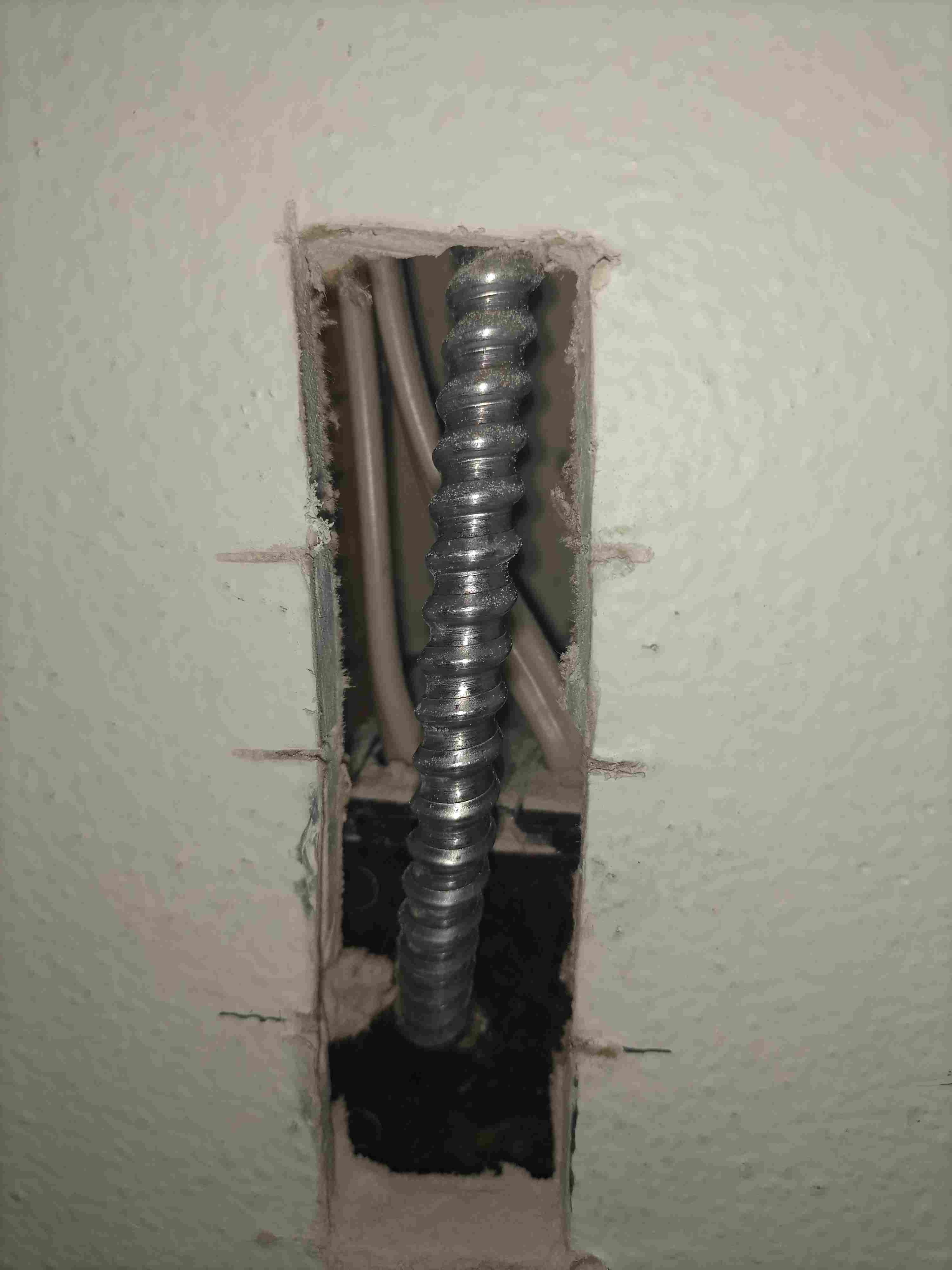I'm installing a new receptacle to power a wall-mounted TV, it is feeding from an existing receptacle on the other side of the wall. The existing box has 2 cables coming in from the top, and I believe another cable from the bottom. I drilled a 1/2 inch hole on the back of the box to insert the new NM cable feeding the new receptacle.
But I am running into some problems/questions:
- Is it acceptable to insert metallic flex conduit into a non-metallic box, assuming the conduit is bonded on the other end to a grounded metallic box? Is it acceptable to use a bare NM cable without any conduit?
- The flex metallic conduit coming out from the back of the existing box does not appear to be bendable enough to avoid touching the drywall. Is it acceptable to patch over this, or should I put a blank face plate as a way to protect the conduit from nails or drilling?
- The electrical box appears to have 3 existing cables coming in, not including the new cable. The cables in the box feel crammed. Could this lead to a code violation or safety hazard? Should I attempt to replace with a larger box, or what other options do I have?



